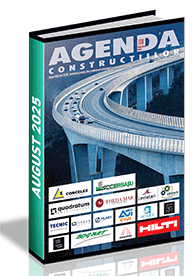| Growth resumption depends on regaining investors’ trust |
| English Section 06 Iul 2011 08:00 |
 Official statistics are increasingly favourable, confirming the overcoming of the recession period, at least theoretically. The latest available data indicates, for the first three months of 2011, a 1.7% general economy growth as against the corresponding period of 2010, the sequential variation being of 0.7%. Unfortunately, the construction sector’s contribution to this recovery was negative, the sector activity dropping by 2.4%. Also, consumption recorded a 0.5% contraction, which indicates that the financial recovery has not yet transferred into beneficiaries’ incomes, and the purchase power is still quite low. Another element potentially having a negative influence on this indicator is the low trust level of potential investors, which generates a certain reticence in making acquisitions. Official statistics are increasingly favourable, confirming the overcoming of the recession period, at least theoretically. The latest available data indicates, for the first three months of 2011, a 1.7% general economy growth as against the corresponding period of 2010, the sequential variation being of 0.7%. Unfortunately, the construction sector’s contribution to this recovery was negative, the sector activity dropping by 2.4%. Also, consumption recorded a 0.5% contraction, which indicates that the financial recovery has not yet transferred into beneficiaries’ incomes, and the purchase power is still quite low. Another element potentially having a negative influence on this indicator is the low trust level of potential investors, which generates a certain reticence in making acquisitions. A positive aspect, potentially representing a welcome correction in the national economy evolution is that the GDP increase was almost exclusively obtained by increasing production (especially that intended for exports), unlike the period before the crisis, when development was based on the exacerbated consumption growth, sustained by means of easily granted credits. It is true that, traditionally, a well-structured capitalist system is based on both available levers (production and respectively consumption), any imbalance from this point of view generating negative consequences, on a long term. Just like an increase obtained exclusively by increasing production (for sale on external markets) represents an abnormal situation, the contrary phenomenon is just as damaging, namely when ignoring the need to sustain consumption by means of an efficient profitable activity.
Globalization hides away punctual losses
The construction sector situation is special as it has lately experienced an internationalization of operations carried out by the sector’s big entrepreneurs, in such a way that the export concept has become quite vague. Basically, the main world corporations carry out their activity worldwide, mainly orienting according to each region’s development potential. Currently there are ever less contractors exclusively performing operations in a well-defined national framework. A similar trend is also noticed in the sector of material suppliers, which started to apply clear strategies of relocating production activities, thus getting closer to the areas with higher demand. Given this reality, it is difficult to carry out a punctual analysis, pointing out a certain company’s specific efficacy. It is true that, for the time being, the new constructions market activity in Romania is still far from being unblocked, but this doesn’t mean that the main competitor companies obligatorily have problems from this point of view. Once again, we must point out that the essential element which is going to lead to a sector situation unblocking is represented by regaining investors’ trust (irrespective of their legal status). As long as there is enough suspicion of any kind, the allotted funds will be insufficient.
Local system problems delay development resumption
An interesting phenomenon was recently noticed, pointing out the lack of any scientific connection between the main economic indicators (undeniable objective elements) and investors’ perception. Thus, prestigious Western economic analysts emphasized the idea according to which, despite the fact that Romania’s performances in relation to the economic stability and budget deficit control are in line with the chart set by the international financial institutions, the classification by big sector agencies (the so-called "country rating") has no chance of improving in the immediately near future. The respective specialists claim that there is also the possibility that the austerity measure system may relax for political-electoral reasons. It looks like a situation with no way out, subjective and exogenous influential factors directly affecting recovery chances. This aspect will decisively influence the evolution of the construction sector, which is strongly dependent on external funds (both those available for crediting institutions, and the speculative amounts, promoted by closed investment funds). Obviously, there is also the solution of public expenses, but this aspect is extremely sensitive, considering the experience of the biased way of earmarking state budget funds. It is true that certain "traditional customers" may benefit from the respective facilities, but this will be of no use to the sector, overall. Unfortunately, a very harmful "way or working with the state" has already been applied in the sector, being adopted by all competitors. The most significant proof thereof is represented by the provision of execution works for various highway sections, which climaxed in an inadequate public undertaking of "contractual terms observance" (as if such an aspect could be subject to negotiations).
Next: the moment of projects sustained by professional investors
An advantage in terms of image would represent an essential condition for Romania’s regaining big investors’ attention. If so far they have only accessed the local market exclusively for strictly speculative reasons, exploiting as much a possible the opportunity of the "boom" generated by the weak financial market regulation, for the future it would be desirable that the "attraction" be represented by the possibility to obtain consistent profits under civilized conditions and by undertaking low risks. For all sector market competitors, it has become obvious that, with the current recession, it is no longer possible to rapidly and easily obtain huge profit margins, and from now on prosperity can only be created by means of constructive efforts, based on the strict observance of clearly set rules. Even if the corruption system will always be ineradicable, it will be compulsory to limit this phenomenon down to a level no longer representing a threat for the entire branch reliability, collecting, marking a consistent profit and withdrawal), they no longer have real application opportunities, even for the mere reason that the respective actions’ profitability is no longer able to draw such "investors". As previously mentioned, it is big international companies’ turn to access the investment sector. A well-known construction material supplier recently stated that the Romanian real-estate market will only become normal when wide residential projects shift from hardly developed Ilfov county areas to Central Bucharest. Unfortunately, local entrepreneurs still have to wait for this moment, and till then they will have to adopt an expectant policy. It is difficult to estimate when such a situation can be reached, but in 2011 there is no way special changes may be experienced by the construction sector activity.
Reducing workforce taxation - an objective need
Finally, a serious construction sector problem, having become emblematic in the last 20 years, is represented by the way of using workforce. In the sector, the number of defined duration contracts is prevailing, which generates an exponential increase of the illegal activities risk (evading payment of state budget fees). This situation generates disloyal competition and significant losses per social insurance components. However, in order to encourage companies to adopt legal action ways, punitive actions are insufficient, a review of the tax code being also indicated in terms of work taxation. The idea was often promoted lately, being apparently sustained by the highest public officers. Unfortunately, from the declared intention - which is definitely praiseworthy - to concrete action, there is a long way that no competent authority has shown willingness to cross. The imposition of higher taxes pushes companies towards identifying "alternatives" able to evade the respective obligations.
Article published in the July/August 2011 issue of the AGENDA CONSTRUCTIILOR Magazine. For detailed information click here!
|
ABONARE REVISTA (click aici): PROIECTE | INVESTITII | REVISTE | INDEX COMPANII
DATE DE CONTACT: Agenda Constructiilor & Fereastra - Tel/Fax: 021-336.04.16, 031-401.63.88




















































